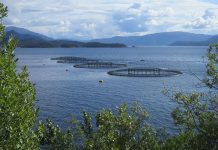
Photo: Wikimedia Commons
The global oyster market is growing, and it is expected to reach US$120,4 billion (around R2,1 trillion) this year, up from US$116,3 billion (R2 trillion) in 2024. By 2033, it is expected to reach US$158.8 billion (R2,8 trillion), reflecting a compound annual growth rate of 3.5% for the forecast period.
Several factors are contributing to this upward trend. Experts forecast that global seafood demand will continue to rise through 2050, driven by population growth. Within this broader trend, oysters are gaining popularity as a delicacy. At the same time, increasing disposable incomes in certain regions are allowing more consumers to access and enjoy high-value products like oysters.
Further augmenting the market are technological advancements, particularly in e-commerce and cold chain logistics, which are expanding distribution channels, improving accessibility, and boosting sales across global markets.
Health and nutrition trends are also playing a role. Oysters are a low-calorie, high-quality source of protein containing vitamins like B12, minerals like zinc and copper, and omega-3 fatty acids, making them appealing to health-conscious consumers.
Regional insights
In 2024, the Asia-Pacific region dominated the global oyster market, accounting for over 94,9% of market share, according to global research firm IMARC Group. Seafood is deeply embedded in the region’s traditional food culture, with the highest consumer demand seen in China, Japan, and South Korea. China also ranks among the world’s top oyster producers through its wild harvesting and aquaculture operations.
This strong regional performance reflects shifts in consumer behaviour and market accessibility. Once regarded as a gourmet seafood item, oysters are now reaching a broader market. The growth of the middle and upper classes has led to more consumers enjoying fine dining, while the proliferation of sushi bars and seafood restaurants is making oysters more accessible and affordable. Additionally, urbanisation and the growing awareness of oysters as a healthy protein source are increasing demand.
The Asia-Pacific region also plays a significant role in global exports, benefitting from its extensive coastline, growing trade links, and strong government support for aquaculture development, market research firm IMARC Group notes.
North America is also expected to fuel market growth going forward, with the US a major player in the region. In 2024, the country secured a 92,3% share of the regional oyster market, supported by an increase in investments in oyster reef restoration programmes and rising consumer demand driven by the expanding e-commerce sector.
Benefits of oyster farming
With global demand exerting significant pressure on wild fish stocks and marine ecosystems, oyster farming offers a sustainable solution. The molluscs require neither feed nor fresh water, making them a low-impact choice for production.
Ongoing research and innovation in aquaculture breeding programmes are improving oyster survival rates, disease resistance, and yields, allowing producers to meet growing demand more efficiently and sustainably.
Oyster farming also offers environmental benefits by supporting the health of marine ecosystems. A single oyster can filter and purify around 200ℓ of water a day, improving water quality and supporting biodiversity. Additionally, these molluscs absorb carbon dioxide, helping to mitigate the effects of climate change.
In the Middle East, countries such as the United Arab Emirates and Oman are currently developing oyster farming initiatives to reduce their dependency on imports.
The market in 2025
The oyster farming industry is becoming increasingly dynamic, with 2025 expected to be characterised by the rise of online sales, diverse market growth opportunities, and consumer preferences for sustainably sourced seafood. A key opportunity for producers lies in tapping into emerging markets such as India and Brazil, where better incomes are encouraging more adventurous palates.
Success will also hinge on adaptability and differentiation in this competitive global market. Strategies such as experimenting with cultivation techniques to create unique flavour profiles, launching innovative oyster products, and differentiation through packaging and certifications are already gaining traction and will be key to staying ahead of the competition.













